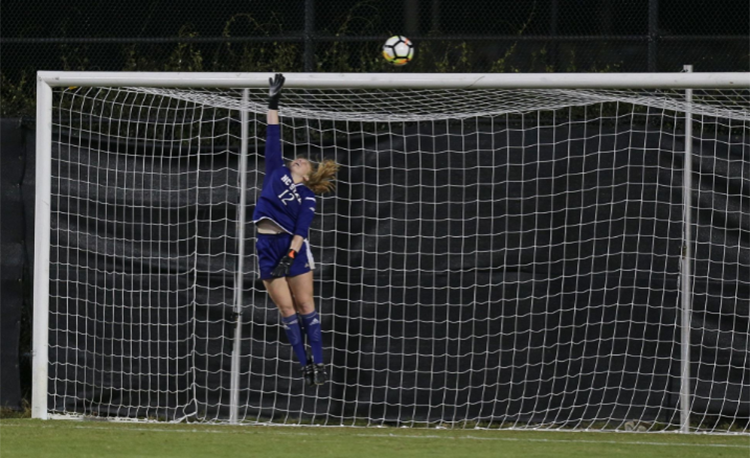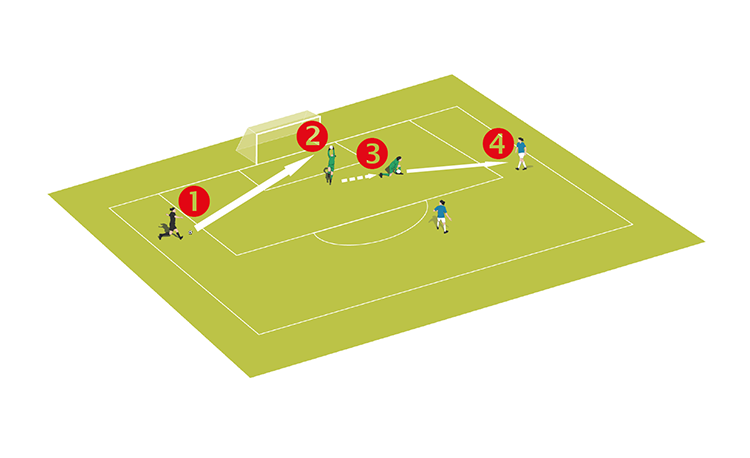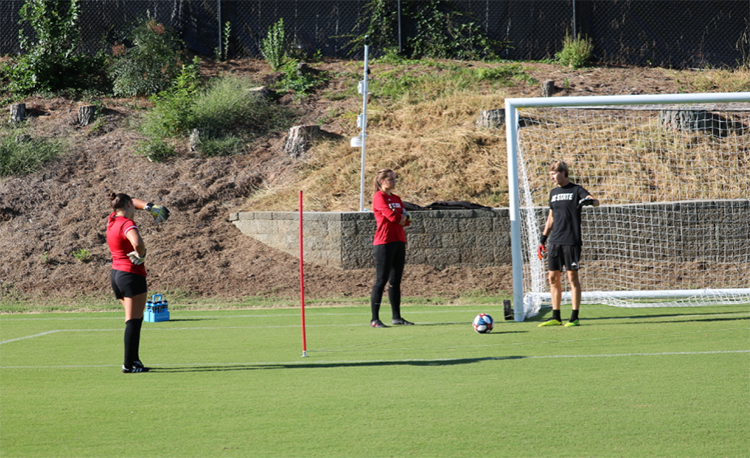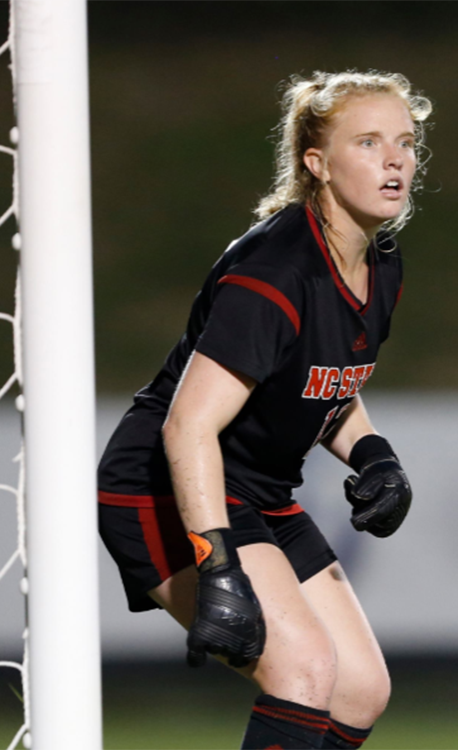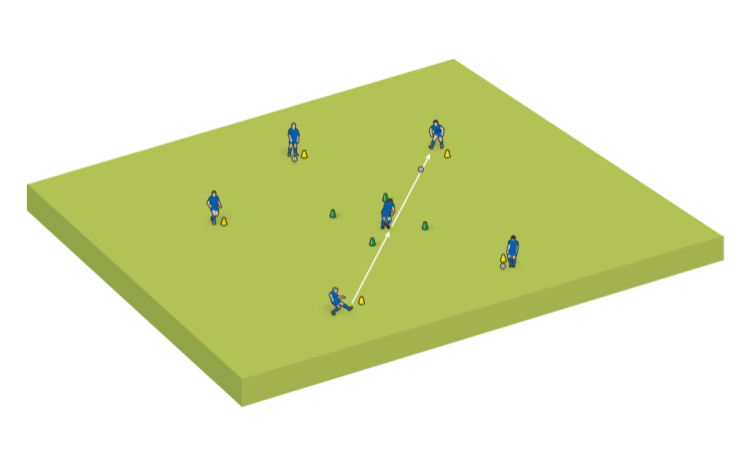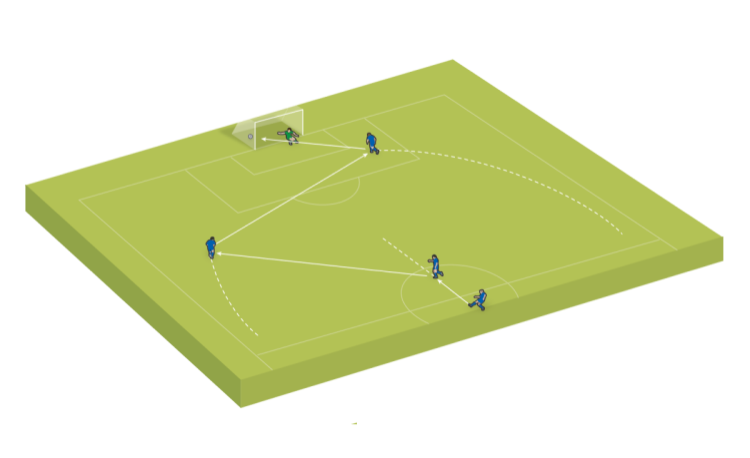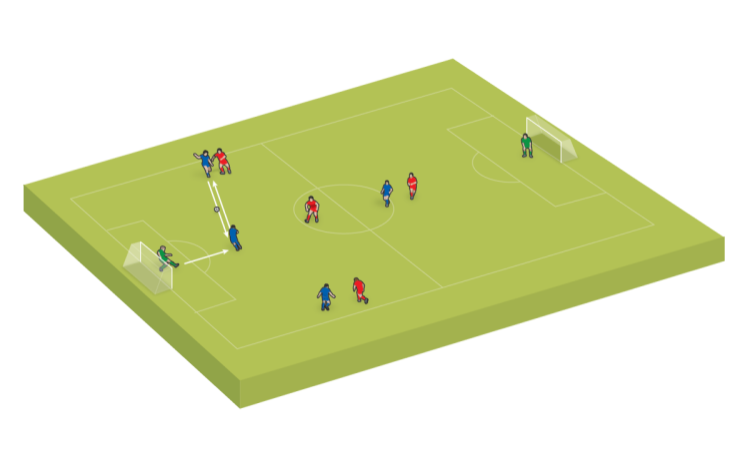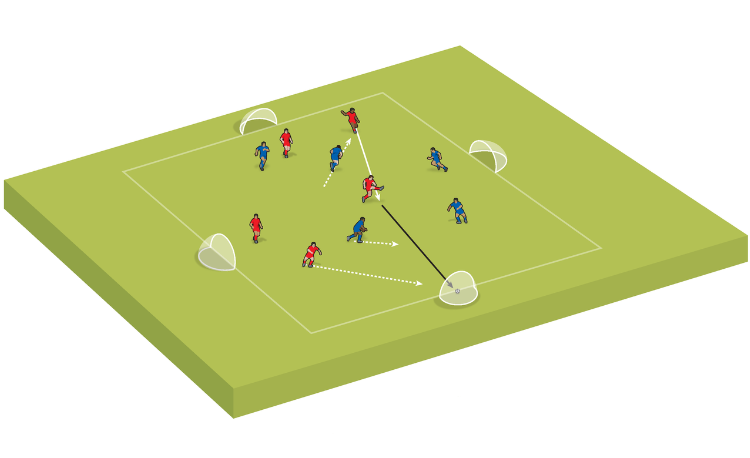Working with shorter goalkeepers
You don’t have to be tall to be a successful goalkeeper. North Carolina State University coach Justin Bryant explains why size doesn’t matter.
Among many coaches at all levels of the game, there is a persistent distrust of shorter goalkeepers.
They can’t reach the corners, the reasoning goes; or it’s assumed they can’t deal with heavy challenges for crosses. And, so, head coaches often turn to exceptionally tall goalkeepers as a one-stop solution to these problems.
What they often find instead is simply a different set of problems, as many tall keepers struggle with low shots, and may not be quite as agile as they could be.
There is no one perfect physique. Shorter goalkeepers can be successful in the modern game; they just need the right understanding of their specific challenges, and training which reinforces the proper positioning, decision-making and techniques required.
At North Carolina State University, we compete in the best and most challenging level of women’s college soccer in the US.
The 14 teams in the Atlantic Coast Conference (ACC) are loaded with talent, huge numbers of which go on to play professionally all over the world and represent their national sides in international competition.
ACC programs regularly challenge for the national championship. The need to recruit the best players in the country means ACC schools are often in competition with one another for the same players.
“Most make a beeline for the tallest keepers. Talented but shorter keepers get overlooked."
Top-level goalkeepers are at a premium, and as there is a general misunderstanding of goalkeeping, most programs make a beeline for the tallest goalkeepers.
This means that a number of very talented but shorter goalkeepers tend to get overlooked. In 2014, we spotted one such goalkeeper - Sydney Wootten, of San Diego, California.
Sydney was listed as 5’6”, but such listings are often generous to the point of comical.
Syd was closer to 5’4”. This scared off a lot of top programs, despite her obvious qualities - she had tremendous quickness, exceptional foot skills and distribution ability, and an intense competitive nature. We were thrilled when Sydney chose to play at NC State.
But this is when the work began. While the bias against shorter goalkeepers is pervasive, there are genuine challenges shorter goalkeepers face.
They will find dealing with crosses in a crowded box more of a challenge than a taller keeper might. They will need a greater degree of lateral speed and vertical jumping ability to deal with well-places shots. And it isn’t as easy for them to simply stick out an arm to make up for a positioning or technical error.
The approach we took with Sydney, and one I would take with any shorter goalkeeper, had four components: technical, tactical, physical, and psychological.
The technical component was the simplest. Syd arrived at NC State with fine technique - we simply used repetition to ingrain it further and make sure that if she could get a hand to a high shot, or a fist to a cross, she used the proper form and motion to deal with the ball effectively. It’s no good being able to jump a mile high if you then simply palm a cross right to the danger area in front of goal.
One key when dealing with shorter keepers is making sure they understand the need to use the ball’s pace to help guide it over the bar or away from goal.
There is sometimes a panicky reaction to high shots, which manifests in a wild or violent swing at the ball. All too often, this results in poor contact, or, worse, missing the ball completely. When tipping a high shot over the bar, for example, the arm and hand motion must be under control at all times. The idea is not to pummel the ball to safety, but to guide it there.
The second main technical component involves the footwork needed to turn side-on to the ball and use the top hand to guide it over the bar. Some coaches call this footwork a ‘drop step.’ The goalkeeper should be comfortable turning to either side, and dropping with either foot, before saving with the top hand.
The tactical component largely involved starting positions. It stands to reason that the closer a goalkeeper is to their line, the easier it is to get a hand close to the bar, thus preventing high shots from drifting over them and in. Like a lot of young goalkeepers, Sydney had been taught to narrow the angle but had not been given clear guidelines about when this creates more problems than it solves.
For shots from around the edge of the box and further out, a shorter goalkeeper standing four or five steps off her line is asking for trouble. Any high shot is going to present a major risk, especially one hit with some pace, as there will simply not be enough time to retreat close enough to their line.
We worked on making sure Sydney was within a step or two of her line for shots from this range, while being more aggressive when dealing with shots from well inside the box.
Related Files
Starting position when dealing with crosses is equally important for shorter goalkeepers, who will often find it more difficult to reach above crowds for a cross.
We made sure Syd took more aggressive starting positions for outswinging corners and free kicks, or crosses and free kicks from very wide positions, where her goal was under much less direct threat.
This aggressive starting position meant she had less distance to cover to reach the ball, and could time her approach to and attack of the ball more effectively.
The physical component involved improving Sydney’s jumping ability and increasing her foot speed. This task fell largely to our team of sports-science coaches. In addition to strength training with weights, they incorporated plyometrics, stretching and flexibility training, and sprint work.
The psychological component is critical for shorter goalkeepers. My focus for Sydney was making sure she exuded ‘presence’ and outward self confidence at all times. The fact is, a shorter goalkeeper will often be targeted by opposition who may see them as a soft target, and they will have to prove otherwise.
A goalkeeper with ‘presence’ makes a noticeable and positive impact on the game even when they’re not involved in the action. A good start is simply looking the part. Chin up, loud and decisive communication, overall positive body language and energy: all these things send a message to the opposition and your teammates that you are confident, you’re not going to hide, and you’re prepared for whatever the game throws at you.
Sydney Wootten was an unqualified success at NC State. She held down the number one shirt for four seasons, and led the program to unprecedented heights. She was a reliable, consistent, and sometimes spectacular performer, all because she played the game to her strengths, while minimizing any vulnerability her lack of height suggested.
The challenges faced by shorter goalkeepers are very real, but Sydney is proof that with the right approach, they can be overcome.
Newsletter Sign Up
Coaches Testimonials

Gerald Kearney, Downtown Las Vegas Soccer Club

Paul Butler, Florida, USA

Rick Shields, Springboro, USA

Tony Green, Pierrefonds Titans, Quebec, Canada
Subscribe Today
Discover the simple way to become a more effective, more successful soccer coach
In a recent survey 89% of subscribers said Soccer Coach Weekly makes them more confident, 91% said Soccer Coach Weekly makes them a more effective coach and 93% said Soccer Coach Weekly makes them more inspired.
*includes 3 coaching manuals
Get Weekly Inspiration
All the latest techniques and approaches
Soccer Coach Weekly offers proven and easy to use soccer drills, coaching sessions, practice plans, small-sided games, warm-ups, training tips and advice.
We've been at the cutting edge of soccer coaching since we launched in 2007, creating resources for the grassroots youth coach, following best practice from around the world and insights from the professional game.
